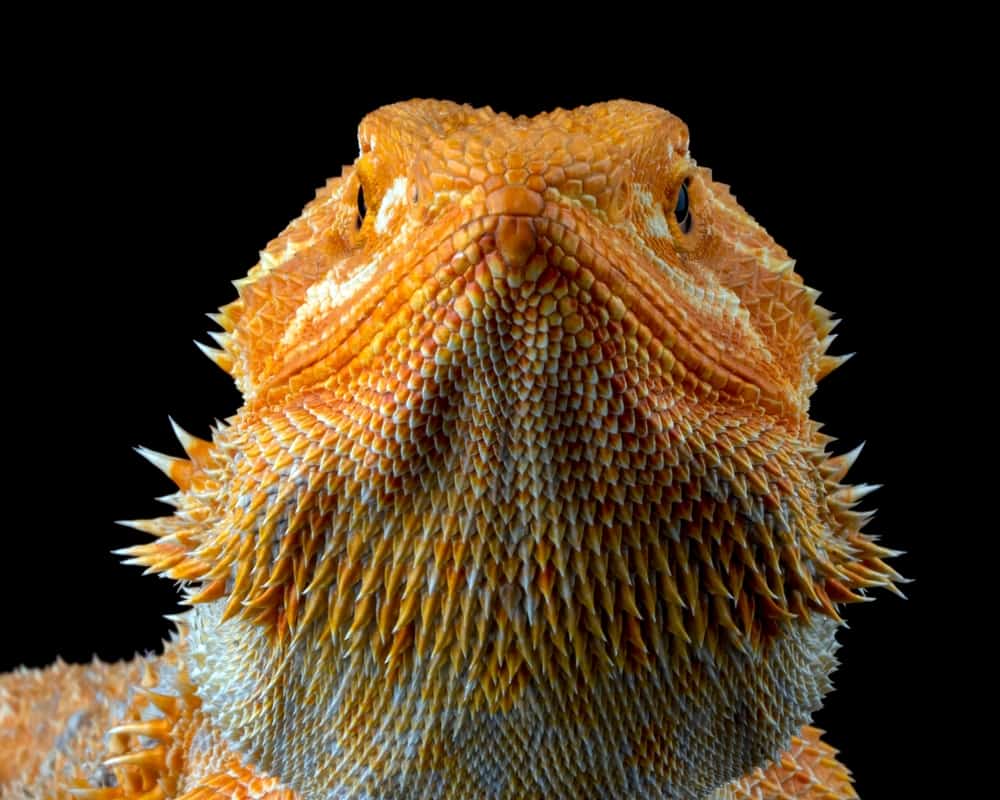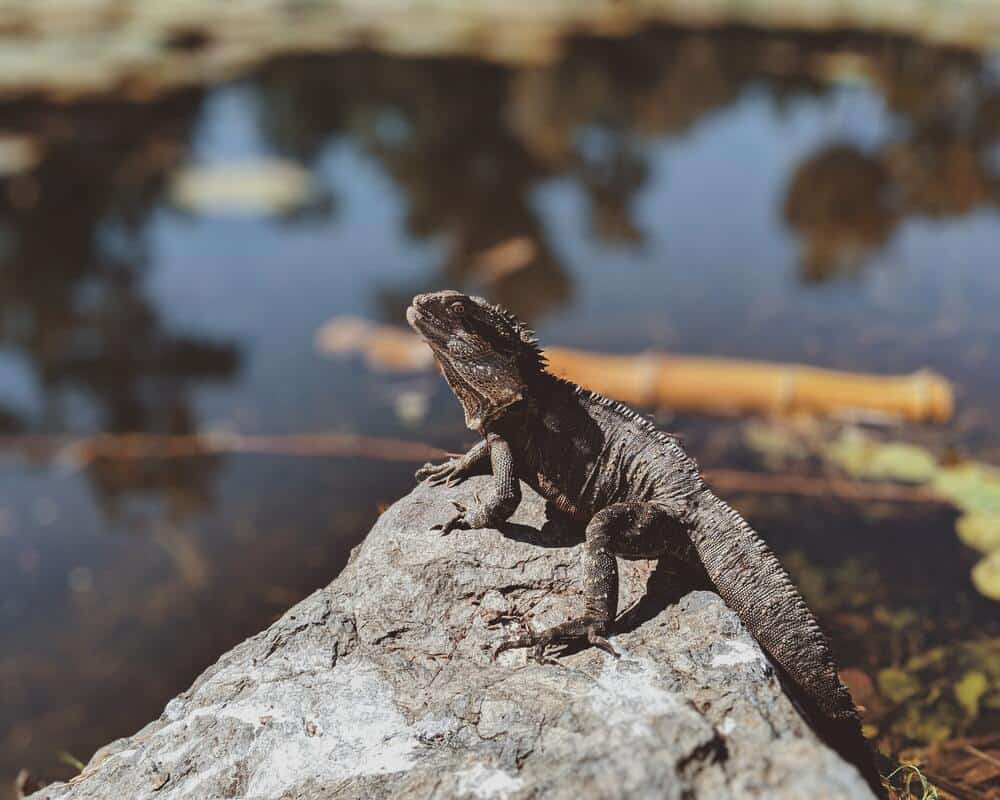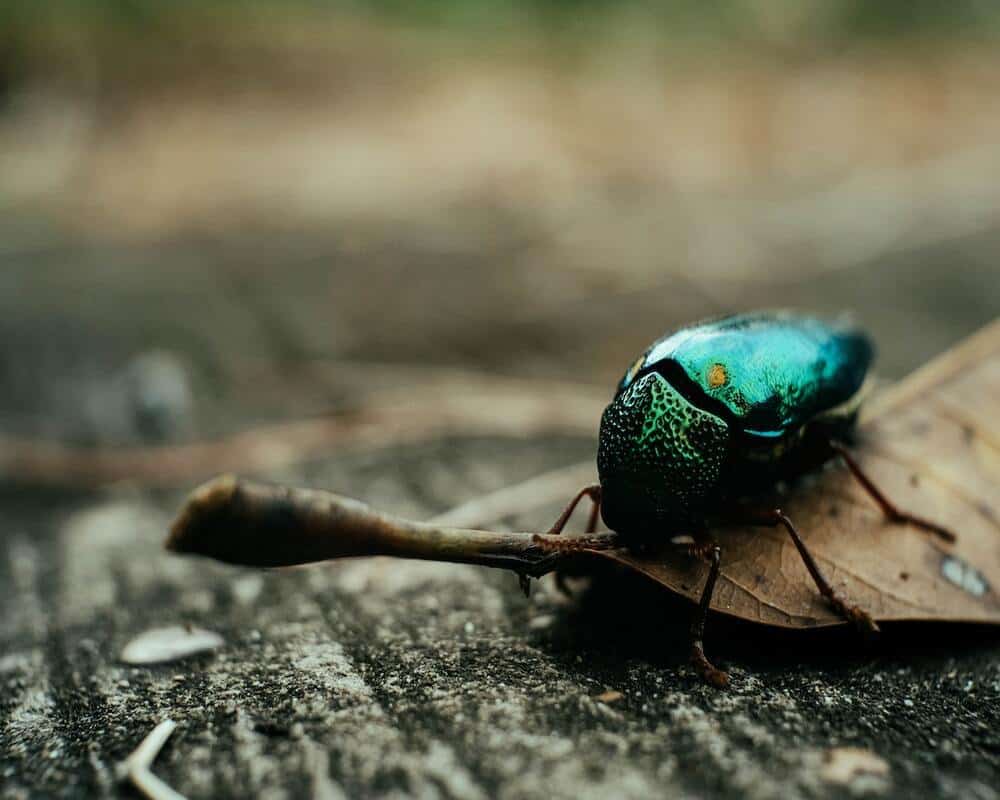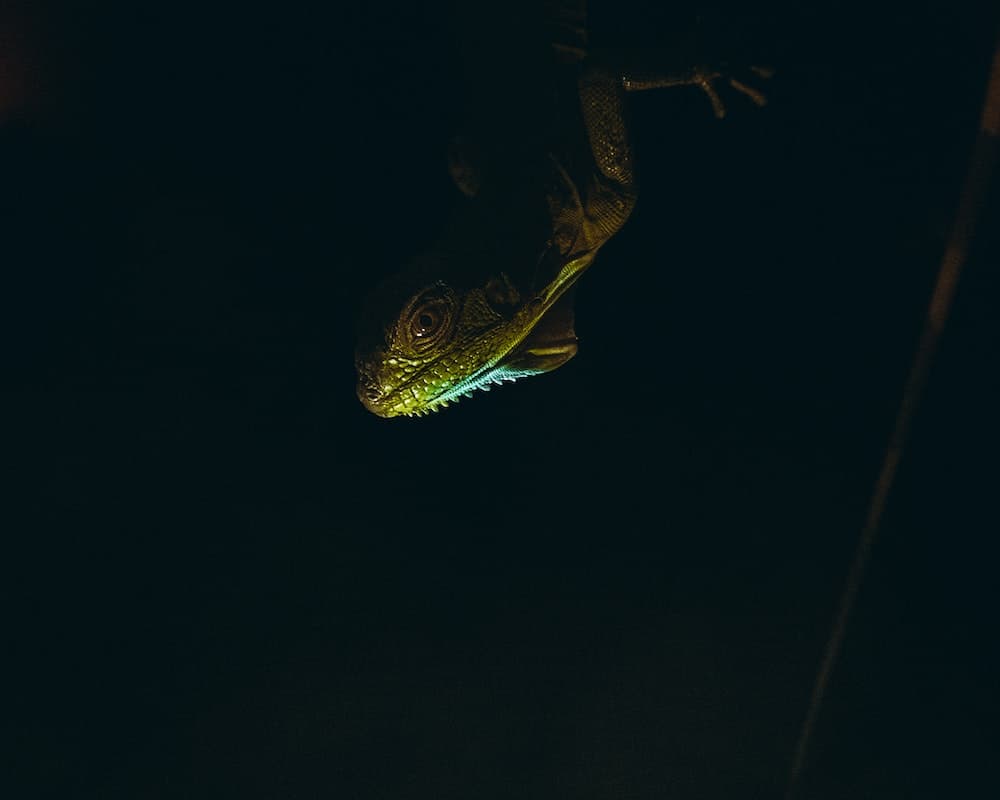Bearded dragons can bob their heads up and down for various reasons. It is a natural response to environmental stimuli. The reasons could mean anything from bearded dragons being territorial, interest in mating, displaying dominance, acknowledgment of the presence of another animal or being, showing submission, and responding to stress.
Why Do Bearded Dragons Bob Their Head? What Does Head Bobbing of Your Bearded Dragon Mean?
Bearded dragons are known to display a peculiar behavior of head-bobbing. It can be easily identified by a display of moving their heads up and down.
This is not to be confused with bearded dragons shaking their head side-to-side or shaking their entire bodies (which could mean some deficiency or an indication of disease like Metabolic Bone Disease).
Top 5 Reasons Your Bearded Dragon Bobs Its Head
There could be a lot of reasons why your bearded dragon is bobbing its head up and down. The reasons behind head bobbing are all related to its environment and therefore it is easy to decipher the reason behind this oddly amusing behavior of your bearded dragon.
- Guarding Their Territory
Bearded dragons are semi-arboreal, solitary creatures. This also means that they are territorial in nature and chase other bearded dragons or creatures from their territories in the wild.
They do this by intimidating the other bearded dragons or other creatures by bobbing their heads up and down.
In a domestic environment, bearded dragons display this behavior of guarding their territories if another bearded dragon is housed in the same pet enclosure. Territorial fights can erupt.
If your bearded dragon is new, it may also be guarding its territory against you or other pets in the house.
- Display of Dominance
Usually when it comes to other animals in the wild, bearded dragons flee. But if there is another bearded dragon in the picture, they will engage in some form of display of dominance.
If your pet enclosure has two bearded dragons, chances are one of them will try to dominate the other.
Both male and female bearded dragons can show dominance in front of their counterparts, however, males are often more aggressive. They can even end up fighting and biting each other if one of them does not submit to the dominance of the more dominating one.
The head bobbing in case of displaying dominance is usually accompanied by stomping of the feet as well. Surprisingly, even in submission, bearded dragons can be seen bobbing their heads up and down.
However, they do it more slowly, usually accompanied with a waving of their arm, to indicate submission.
- Showing Interest in Mating
If your pet enclosure has a male and a female bearded dragon and the male bearded dragon is bobbing its head, it could indicate that it is interested in mating the female bearded dragon.
Female bearded dragons also bob their heads up and down before mating, as if to acknowledge the advances of male bearded dragons. The female bearded dragons, however, bob their heads more gently and in a subtle manner.
Check out this video to understand this behavior better.
The bobbing up and down of the head by the male bearded dragon is also a way to show his dominance over the female bearded dragon. If the female bearded dragon in your pet enclosure does not bob her head to the bobbing of the male’s advances, it just means she is not interested in mating.
- Acknowledging Other Pets or Animals
If your pet bearded dragon is the only pet in the pet enclosure and is still bobbing its head, there could be different reasons behind it.
If there are other pets like cats or dogs in the house, and they are near the terrarium, chances are the bearded dragons will start bobbing their heads towards the pets. The bobbing could either mean that they are guarding their territory or they are simply acknowledging the other pets.
Bearded dragons are known to bond with dogs in particular and occasionally play with them. The bobbing of the head simply means that they acknowledge the presence of the other pet. In case, it feels threatened by the cat or dog, it could bob its head towards it as if to leave the bearded dragon alone.
If you do not have other pets, but the pet enclosure is near a window, the head bobbing of your pet bearded dragon could mean that it spotted some other animal or bird out of the window and is again guarding its territory.
- Response to Stress
Another important reason why your pet bearded dragon is bobbing its head is stress. This is the reason which you should be concerned about.
Usually, in case of stress, the head bobbing will continue for a long time. You can easily spot that your pet bearded dragon is stressed if it is accompanied by the darkening of its beard while it is bobbing its head up and down.
If your bearded dragon perceives you or other pets in the house it could feel stressed and bob its head as a defense mechanism.
If your bearded dragon is stressed due to some other reason like housing another bearded dragon in the same enclosure, the submissive one could keep bobbing its head.
Stress could also be induced in your bearded dragon by loud noises in the environment or improper living conditions in the terrarium. Making new changes to the terrarium like moving it to a new location, or adding new plants, or toys to it can also sometimes induce stress in your pet.
Why Do Baby Bearded Dragons Bob Their Heads?
Baby bearded dragons bob their heads in a response to the new surroundings. When it is newly brought to your house, it might not be comfortable and could be interpreting the new surroundings as a threat.
Make sure you give it sufficient time and distance to let it be comfortable in its new surroundings and avoid handling it completely as this could scare the baby bearded dragon even more.
What Should You Do to Eliminate the Factors Causing Stress in Your Bearded Dragon?
Stress is a harmful thing for your pet bearded dragon. Constant stress can reduce the overall immunity of your bearded dragon, which serves as an invitation for other health problems like bacterial infections, loss of appetite, and lethargy.
If you spot that the beard or the spike-like projections on the outer jaw of your bearded dragon is blackish it means your bearded dragon is under extreme stress or is extremely nervous.
Here are some things you can do to eliminate the constant reason for stress in your bearded dragon’s life:
- Separate Enclosure
If you have two bearded dragons, it is highly advisable to provide each of them with a separate enclosure. Keeping them together could trigger endless territorial wars, displays of aggression and dominance, and fights.
This could add a lot of stress to either one of your bearded dragons or both of them. Bearded dragons prefer solitude, and therefore, they should have a separate terrarium for themselves.
- Isolating Your Bearded Dragon from Other Pets
A simple act of your dog or cat running around the room where you have kept your bearded dragon, could trigger stress in your bearded dragon.
If the bearded dragon is not friendly with other pets, it could perceive the presence of your other pets as a sign of aggression or threat.
Try to isolate your bearded dragon to a room where other pets are not allowed. If this is unavoidable you could consider covering the pet enclosure with a piece of cloth.
- Habituate Your Bearded Dragon to Your Presence
When your bearded dragon is new and is bobbing its head whenever you approach it, it could mean that your pet sees you as a threat or is trying to guard its territory against you.
In this case, you need to gently and gradually let your bearded dragon ease into being around you.
You could start by gaining its trust. Avoid handling your bearded dragon frequently if it is completely new. Spending more time to bond with your bearded dragon will help with gaining its trust. You should also be particular about your bearded dragon’s feeding time to help gain their trust.
- Good Habitat and Diet
Ensuring your bearded dragon has a safe and hygienic pet enclosure, and giving it a nutrient-rich diet will prevent any occurrences of physical disease in the bearded dragon.
The pet enclosure should have enough hiding spots for your bearded dragon to hide. If it perceives anything as a threat it should be able to retreat and get that feeling of protection.
- Tending to Physical Diseases
Paying timely attention to its physical health problems or any diseases could prevent further additional stress in your bearded dragon.
In case you observe that your bearded dragon is ill or has any infections, make sure you immediately consult a veterinary doctor for its treatment.




